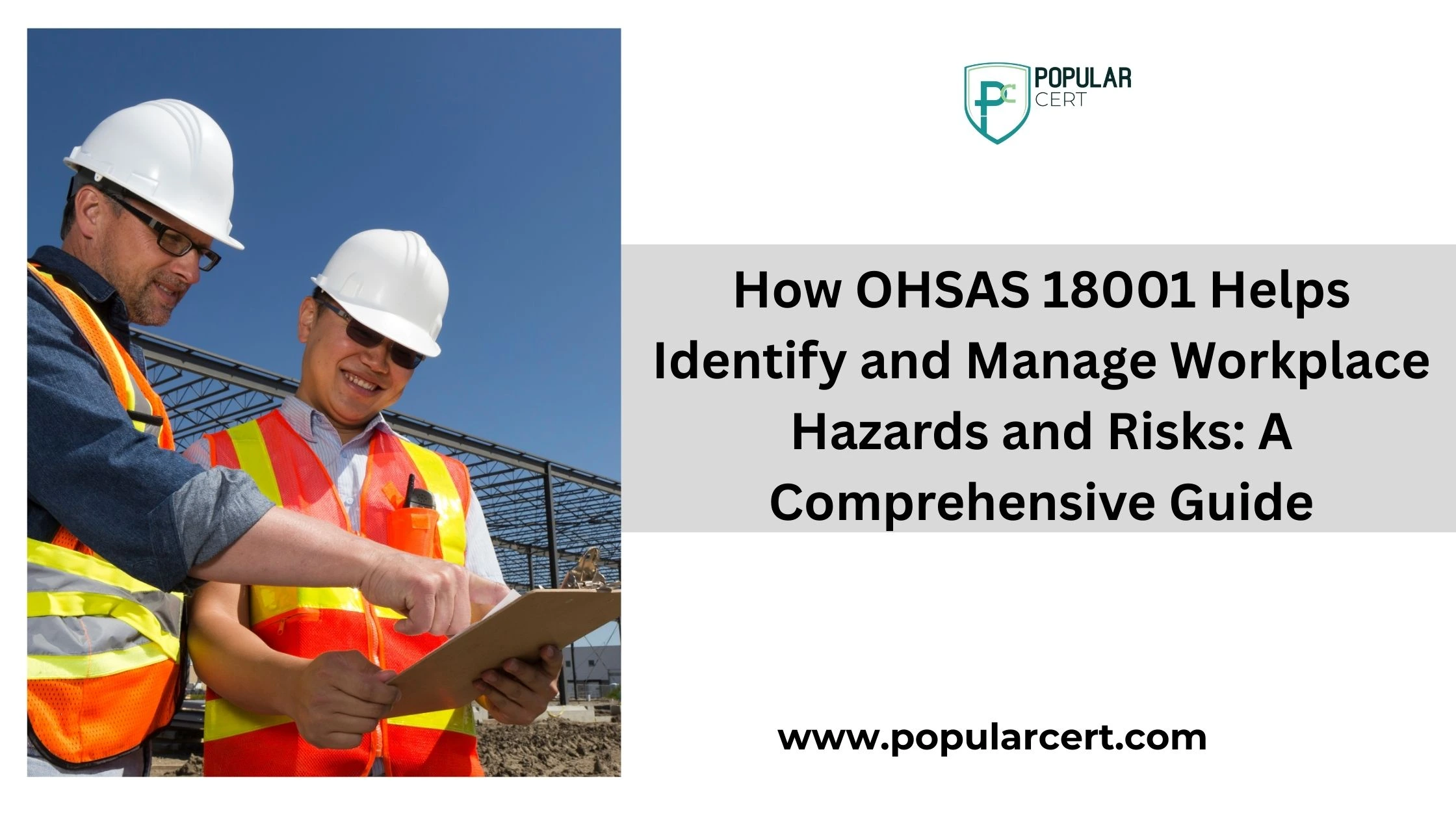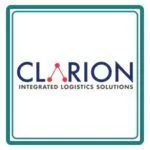How OHSAS 18001 Helps Identify and Manage Workplace Hazards and Risks: A Comprehensive Guide

Workplace safety is a top priority for organizations worldwide, and the OHSAS 18001 standard provides a robust framework for identifying, assessing, and managing occupational health and safety risks. As an internationally recognized Occupational Health and Safety Management System (OHSMS), OHSAS 18001 helps organizations proactively address hazards, ensure compliance with legal requirements, and foster a culture of safety. This blog delves into how OHSAS 18001 aids in hazard identification, risk assessment, and the implementation of effective control measures. Whether you’re dealing with physical, chemical, biological, or psychosocial hazards, this guide will help you understand the systematic approach OHSAS 18001 offers to create a safer and healthier workplace.
The OHSAS 18001 is an internationally recognized standard for Occupational Health and Safety Management Systems (OHSMS). It provides a systematic way to identify and ensure the safety and health of employees through proactive management practices
OHSAS 18001 handles the following parts as follows:
First, let’s discuss Hazard identification.
Hazard identification should aim to proactively determine all sources, situations or acts (or a combination of these), arising from an organization’s activities, with a potential for harm in terms of human injury or ill health.
A few examples are as follows:
- Sources (eg, moving machinery, radiation or energy sources),
- Situations (eg, working at heights), or
- Acts (eg. manual lifting).
Hazard identification should consider the different types of hazards in the workplace, including physical, chemical, biological and psychosocial. The organization should establish specific hazard identification tools and techniques that are relevant to the scope of its OH&S management system.
Here are the few examples of items for inclusion in a hazard identification checklist.
1.Physical hazards.
Physical hazards are environmental factors that can cause harm to a person through direct physical impact or interaction. These hazards are commonly present in workplaces, construction sites, factories, laboratories, and other environments where physical conditions pose risks to human health and safety.
Here are several types of physical hazards that might occur in the workplace.
- slippery or uneven ground
- working at height
- objects falling from height
- inadequate space to work,
- poor ergonomics (eg, workplace design that does not take account of human factors),
- manual handling
- Repetitive work.
- trappings, entanglement, burns and other hazards arising from equipment,
- transport hazards, either on the road or on premises/sites, while travelling or as a pedestrian (linked to the speed and external features of vehicles and the road environment),
- fire and explosion (linked to the amount and nature of flammable material),
- harmful energy sources such as electricity, radiation, noise or vibration (linked to the amount of energy involved),
- stored energy, which can be released quickly and cause physical harm to the body (linked to the amount of energy),
- frequently repeated tasks, which can lead to upper limb disorders (linked to the duration of the tasks)
- unsuitable thermal environment, which can lead to hypothermia or heat stress,
- violence to staff, leading to physical harm (linked to the nature of the perpetrators),
- ionizing radiation (from x- or gamma-ray machines or radioactive substances)
- non-ionizing radiation (e.g. light, magnetic, radio-waves)
Types Of Certification
- ISO Certification
- ISO 9001 Certification
- ISO 14001 Certification
- ISO 45001 Certification
- ISO 22000 Certification
- ISO 27001 Certification
- ISO 17025 Certification
- ISO 13485 Certification
- ISO 20000-1 Certification
- ISO 22301 Certification
- ISO 50001 Certification
- ISO 37001 Certification
- IATF 16949 Certification
- ISO 29001 Certification
- ISO 31000 Certification
- ISO 20121 Certification
- ISO 10002 Certification
- ISO 41001 Certification
Get Free Consultation
Our Clients


















2. Chemical hazards
Chemical hazards are any substance that causes or harms directly to the human health or it might lead to harm to the environment due to toxic, corrosive, flammable or chemical properties. These hazards are commonly found in workplaces such as
Substances hazardous to health or safety due to:
- inhalation of vapors, gases, or particles
- contact with, or being absorbed through, the body
- ingestion
- the storage, incompatibility, or degradation of materials
3.Biological hazards
Biological agents, allergens, or pathogens (such as bacteria or viruses), that might be:
- Inhaled
- Transmitted via contact, including by bodily fluids (e.g. needle-stick injuries)
- insect bites
- Ingested (e.g. via contaminated food products)
4.Psychosocial hazards
Situations that can lead to negative psychosocial (including psychological) conditions, such as stress (including post-traumatic stress), anxiety, fatigue, depression, from e.g.:
- Excessive workload,
- Lack of communication or management control
- Workplace physical environment
- Physical violence
- Physical violence
Risk Assessment: A Key Step in Workplace Safety
- Risk assessment is the process of evaluating the risks arising from hazards, considering the adequacy of existing controls, and determining whether the risks are acceptable.
- Let’s discuss an acceptable risk: one that has been reduced to a level the organization is willing to assume in accordance with its legal obligations, OH&S policy, and OH&S objectives.
- Risk assessment should be conducted by individuals with competence in relevant risk assessment methodologies and techniques, as well as appropriate knowledge of the work.
Risk Assessment Methodologies: Systematic Approaches to Identifying and Mitigating Risks
An organization can use different risk assessment methods as part of an overall strategy for addressing different areas or activities. When seeking to establish the likelihood of harm, the adequacy of existing control measures should be taken into account. A risk assessment should be detailed enough to determine appropriate control measures.
Some risk assessment methods are complex and appropriate to special or particularly hazardous activities. For example, risk assessment of a chemical process plant might require complex mathematical calculations of the probabilities of events that could lead to a release of agents that might affect individuals in the workplace or the public. In many countries, sector-specific legislation specifies where this degree of complexity is required. In many circumstances, OH&S risk can be addressed using simpler methods and can be qualitative. These approaches typically involve a greater degree of judgment, since they place less reliance on quantifiable data. In some cases, these methods will serve as initial screening tools, to determine where a more detailed assessment is needed.
The risk assessment should involve consultation with, and appropriate participation by, workers and take into account legal and other requirements. Regulatory guidance should be taken into account where applicable.
What are the mandatory points an auditor should check in a risk assessment?
- First check That all OH&S Risks have been identified
- Ensure that a procedure has been developed for ongoing identification of hazards, the assessment of risks, and the implementation of necessary control measures.
- Check that the documented procedure will ensure that the company will meet its legal obligations with regards risk assessment
- Review risk assessment records to confirm that the following areas have been considered:
- Identification of hazards;
- Evaluation of risks with existing (or proposed) control measures in place (taking into account exposure to specific hazards, the likelihood of failure of the control measures, and the potential severity of consequences of injury or damage);
- Evaluation of the tolerability of acceptable (residual) risk
- Identification of any additional risk-control measures needed,
- Evaluation of whether the risk controls measures are sufficient to reduce the risk to an acceptable level.
Risk Assessment Techniques:
The three common risk management techniques are:
- Failure Modes and Effects Analysis:
- Hazard and Operability Study (HAZOP);
- 3. 5×5 Method
Risk Control Considerations
- The considerations shall be made on the following when developing Control measures
- Severity/Consequence Likelihood/Occurrence
Hierarchy of Control
The following provides examples of implementing the hierarchy of controls:
- Elimination – modify a design to eliminate the hazard, e.g. introduce mechanical lifting devices to eliminate the manual handling hazard;
- Substitution – substitute a less hazardous material or reduce the system energy (eg lower the force, amperage, pressure, temperature, etc.);
- Engineering controls – install ventilation systems, machine guarding, interlocks, sound enclosures, etc.;
- Signage, warnings, and/or administrative controls – safety signs, hazardous area marking, photo-luminescent signs, markings for pedestrian walkways, warning sirens/lights, alarms, safety procedures, equipment inspections, access controls, sale systems of working, tagging and work permits, etc.;
- Personal protective equipment (PPE) – safety glasses, hearing protection, face shields, safety harnesses and lanyards, respirators and gloves.
Conclusion:
OHSAS 18001 is an invaluable tool for organizations committed to improving workplace safety and reducing occupational risks. By systematically identifying hazards, conducting thorough risk assessments, and implementing control measures, businesses can not only comply with legal requirements but also enhance employee well-being and operational efficiency. Although OHSAS 18001 has been replaced by ISO 45001, its principles remain foundational for effective health and safety management.
GET A FREE CONSULTATION NOW
FAQ
How does OHSAS 18001:2007 help in identifying workplace hazards?
OHSAS 18001:2007 provides a structured approach to identifying hazards by assessing workplace activities, equipment, materials, and environmental conditions. It covers physical, chemical, biological, and psychosocial hazards to ensure a safe working environment.
What is the importance of risk assessment in OHSAS 18001?
Risk assessment helps organizations evaluate workplace hazards, determine their impact, and implement necessary control measures. This ensures compliance with safety regulations and reduces the likelihood of workplace injuries or illnesses.
What are the key control measures for managing workplace risks?
OHSAS 18001 follows the Hierarchy of Controls, which includes:
- Elimination (removing the hazard)
- Substitution (replacing with a safer alternative)
- Engineering controls (adding safety mechanisms)
- Administrative controls (policies and procedures)
- Personal protective equipment (PPE) (gloves, helmets, masks)
